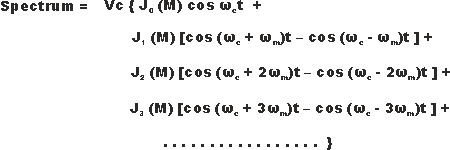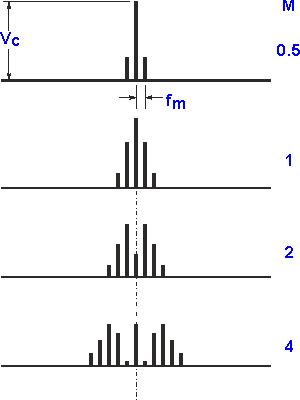Products Category
- FM Transmitter
- 0-50w 50w-1000w 2kw-10kw 10kw+
- TV Transmitter
- 0-50w 50-1kw 2kw-10kw
- FM Antenna
- TV Antenna
- Antenna Accessory
- Cable Connector Power Splitter Dummy Load
- RF Transistor
- Power Supply
- Audio Equipments
- DTV Front End Equipment
- Link System
- STL system Microwave Link system
- FM Radio
- Power Meter
- Other Products
- Special for Coronavirus
Products Tags
Fmuser Sites
- es.fmuser.net
- it.fmuser.net
- fr.fmuser.net
- de.fmuser.net
- af.fmuser.net ->Afrikaans
- sq.fmuser.net ->Albanian
- ar.fmuser.net ->Arabic
- hy.fmuser.net ->Armenian
- az.fmuser.net ->Azerbaijani
- eu.fmuser.net ->Basque
- be.fmuser.net ->Belarusian
- bg.fmuser.net ->Bulgarian
- ca.fmuser.net ->Catalan
- zh-CN.fmuser.net ->Chinese (Simplified)
- zh-TW.fmuser.net ->Chinese (Traditional)
- hr.fmuser.net ->Croatian
- cs.fmuser.net ->Czech
- da.fmuser.net ->Danish
- nl.fmuser.net ->Dutch
- et.fmuser.net ->Estonian
- tl.fmuser.net ->Filipino
- fi.fmuser.net ->Finnish
- fr.fmuser.net ->French
- gl.fmuser.net ->Galician
- ka.fmuser.net ->Georgian
- de.fmuser.net ->German
- el.fmuser.net ->Greek
- ht.fmuser.net ->Haitian Creole
- iw.fmuser.net ->Hebrew
- hi.fmuser.net ->Hindi
- hu.fmuser.net ->Hungarian
- is.fmuser.net ->Icelandic
- id.fmuser.net ->Indonesian
- ga.fmuser.net ->Irish
- it.fmuser.net ->Italian
- ja.fmuser.net ->Japanese
- ko.fmuser.net ->Korean
- lv.fmuser.net ->Latvian
- lt.fmuser.net ->Lithuanian
- mk.fmuser.net ->Macedonian
- ms.fmuser.net ->Malay
- mt.fmuser.net ->Maltese
- no.fmuser.net ->Norwegian
- fa.fmuser.net ->Persian
- pl.fmuser.net ->Polish
- pt.fmuser.net ->Portuguese
- ro.fmuser.net ->Romanian
- ru.fmuser.net ->Russian
- sr.fmuser.net ->Serbian
- sk.fmuser.net ->Slovak
- sl.fmuser.net ->Slovenian
- es.fmuser.net ->Spanish
- sw.fmuser.net ->Swahili
- sv.fmuser.net ->Swedish
- th.fmuser.net ->Thai
- tr.fmuser.net ->Turkish
- uk.fmuser.net ->Ukrainian
- ur.fmuser.net ->Urdu
- vi.fmuser.net ->Vietnamese
- cy.fmuser.net ->Welsh
- yi.fmuser.net ->Yiddish
What is Frequency Modulation Bandwidth, Spectrum and Sidebands?
By Ian Poole
- notes and details of frequency modulation bandwidth, spectrum and sidebands, and their impact on the use of FM.
The bandwidth, spectrum and sidebands are of great importance when using frequency modulation.
The sidebands of a frequency modulated signal extend out either side of the main carrier, and cause the bandwidth of the overall signal to increase well beyond that of the unmodulated carrier.
As the modulation of the carrier varies, so do the sidebands and hence the bandwidth and overall spectrum of the signal.
Frequency modulation Bessel functions & sidebands
Any signal that is modulated produces sidebands. In the case of an amplitude modulated signal they are easy to determine, but for frequency modulation the situation is not quite as straightforward. . They are dependent upon the not only the deviation, but also the level of deviation, i.e. the modulation index M. The total spectrum is an infinite series of discrete spectral components expressed by a complex formula using Bessel functions of the first kind.

The total spectrum can be seen to consist of the carrier plus an infinite number of sidebands spreading out on either side of the carrier at integral multiples of the modulating frequency. The relative levels of the sidebands can be obtained by referring to a table of Bessel functions. It can be seen from the image below that the relative levels rise and fall according to the different values of modulation index.

Relative levels of carrier and sidebands for a frequency modulated signal
For small values of modulation index, when using narrow-band FM, and FM signal consists of the carrier and the two sidebands spaced at the modulation frequency either side of the carrier. This looks to be the same as an AM signal, but the difference is that the lower sideband is out of phase by 180 degrees.

Spectra of an FM signal with differing levels of modulation index
At certain levels of modulation, where the modulation index equals figures of 2.41, 5.53, 8.65 and other higher specific levels, the carrier actuals falls to a figure of zero, the signal being comprised simply of the sidebands.
Frequency modulation bandwidth
In the case of an amplitude modulated signal the bandwidth required is twice the maximum frequency of the modulation. Whilst the same is true for a narrowband FM signal, the situation is not true for a wideband FM signal. Here the required bandwidth can be very much larger, with detectable sidebands spreading out over large amounts of the frequency spectrum. Usually it is necessary to limit the bandwidth of a signal so that it does not unduly interfere with stations either side.
As a frequency modulated signal has sidebands that extend out to infinity, it is normal accepted practice to determine the bandwidth as that which contains approximately 98% of the signal power.
A rule of thumb, often termed Carson's Rule states that 98% of the signal power is contained within a bandwidth equal to the deviation frequency, plus the modulation frequency doubled, i.e.:

Normally the bandwidth of a wideband FM signal is limited to the Carson's Rule limit - this reduces interference and does not introduce any undue distortion of the signal. In other words for a VHF FM broadcast station this must be (2 x 75) + 15 kHz, i.e. 175 kHz. In view of this a total of 200 kHz is usually allowed, enabling stations to have a small guard band and their centre frequencies on integral numbers of 100 kHz.
Key points for frequency modulation bandwidth and sidebands
There are a few interesting points of summary relative to frequency modulation bandwidth:
• The bandwidth of a frequency modulated signal varies with both deviation and modulating frequency.
• Increasing modulating frequency reduces modulation index - it reduces the number of sidebands with significant amplitude and hence the bandwidth.
• Increasing modulating frequency increases the frequency separation between sidebands.
• The frequency modulation bandwidth increases with modulation frequency but it is not directly proportional to it.





